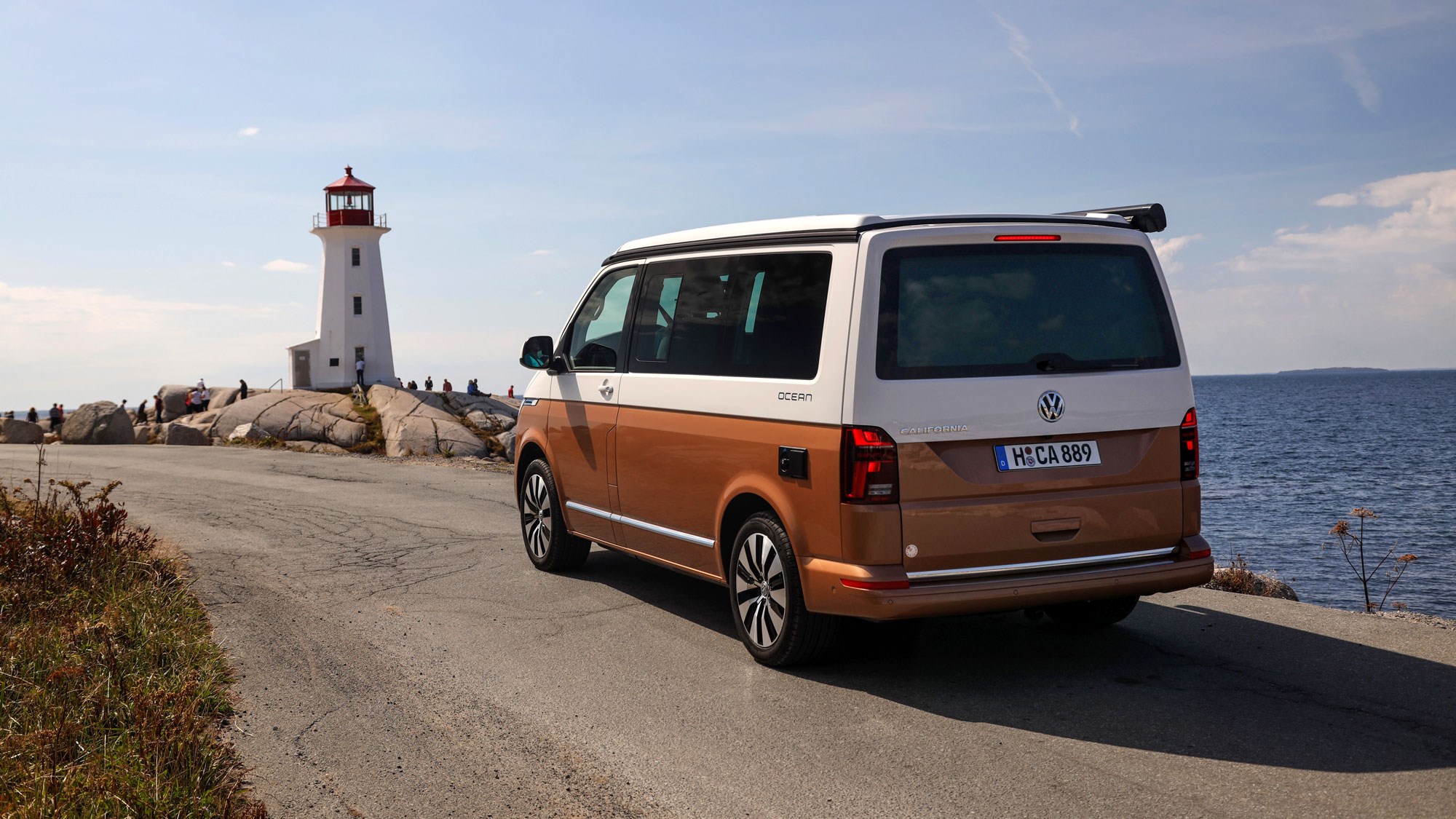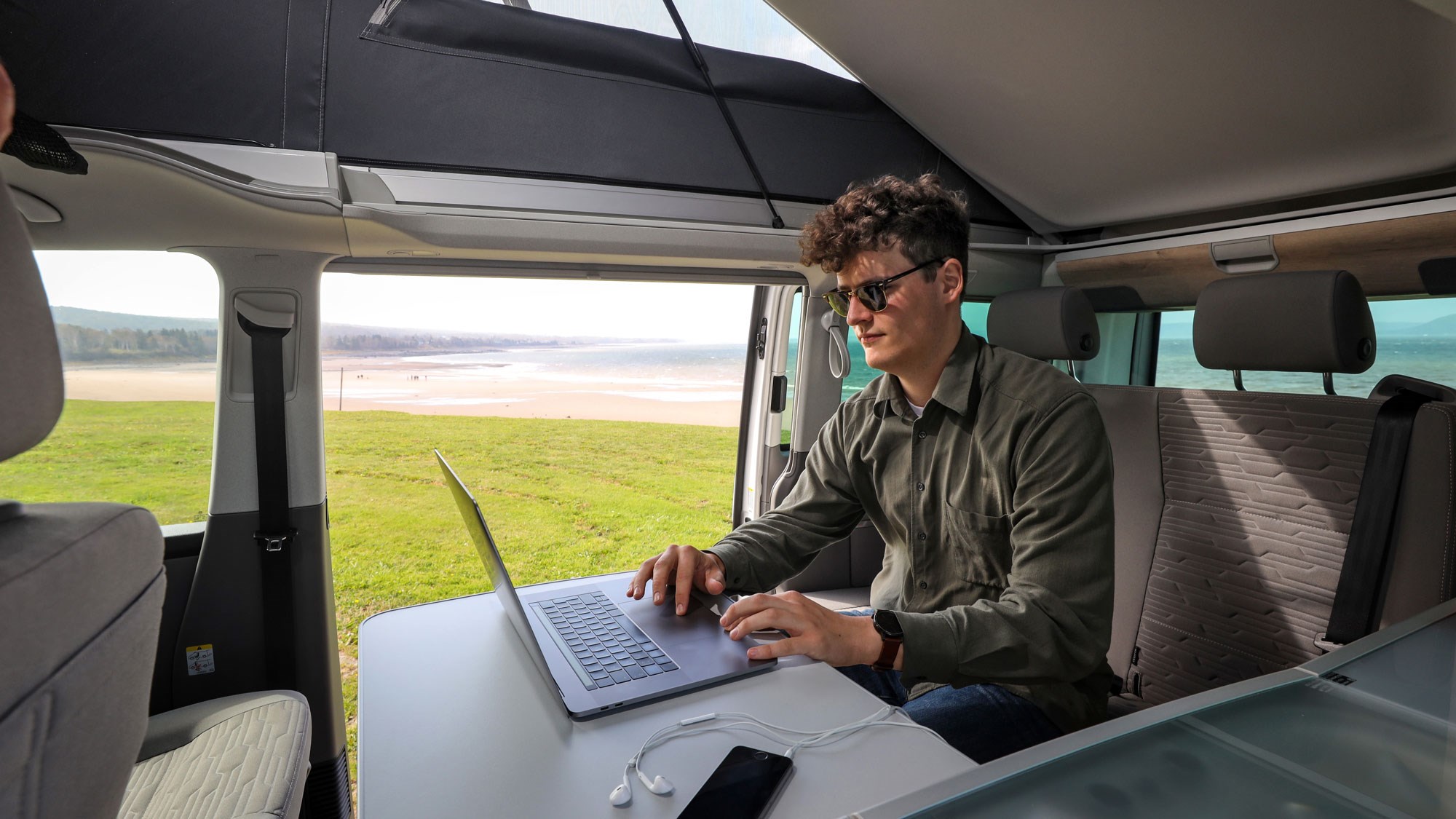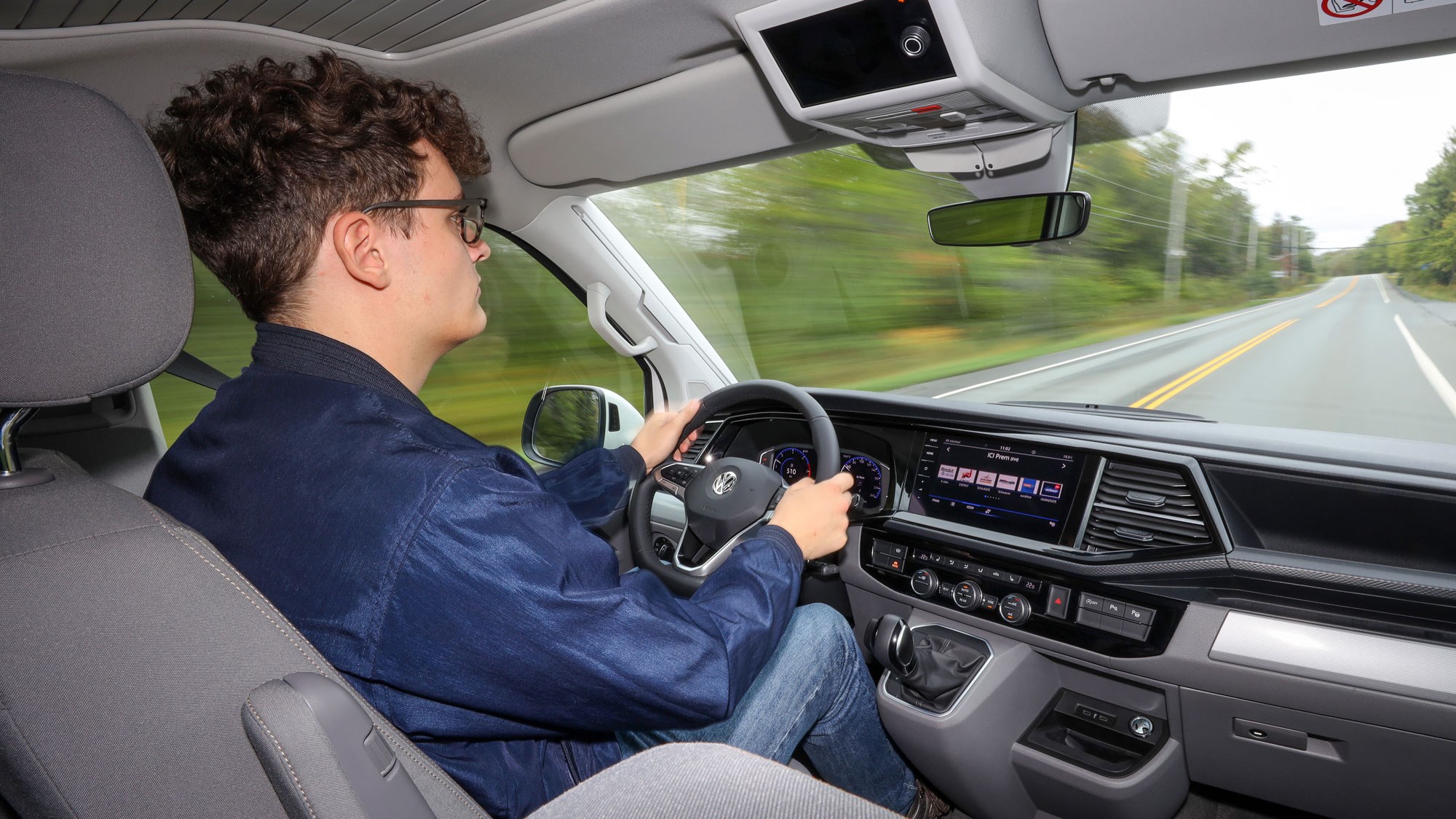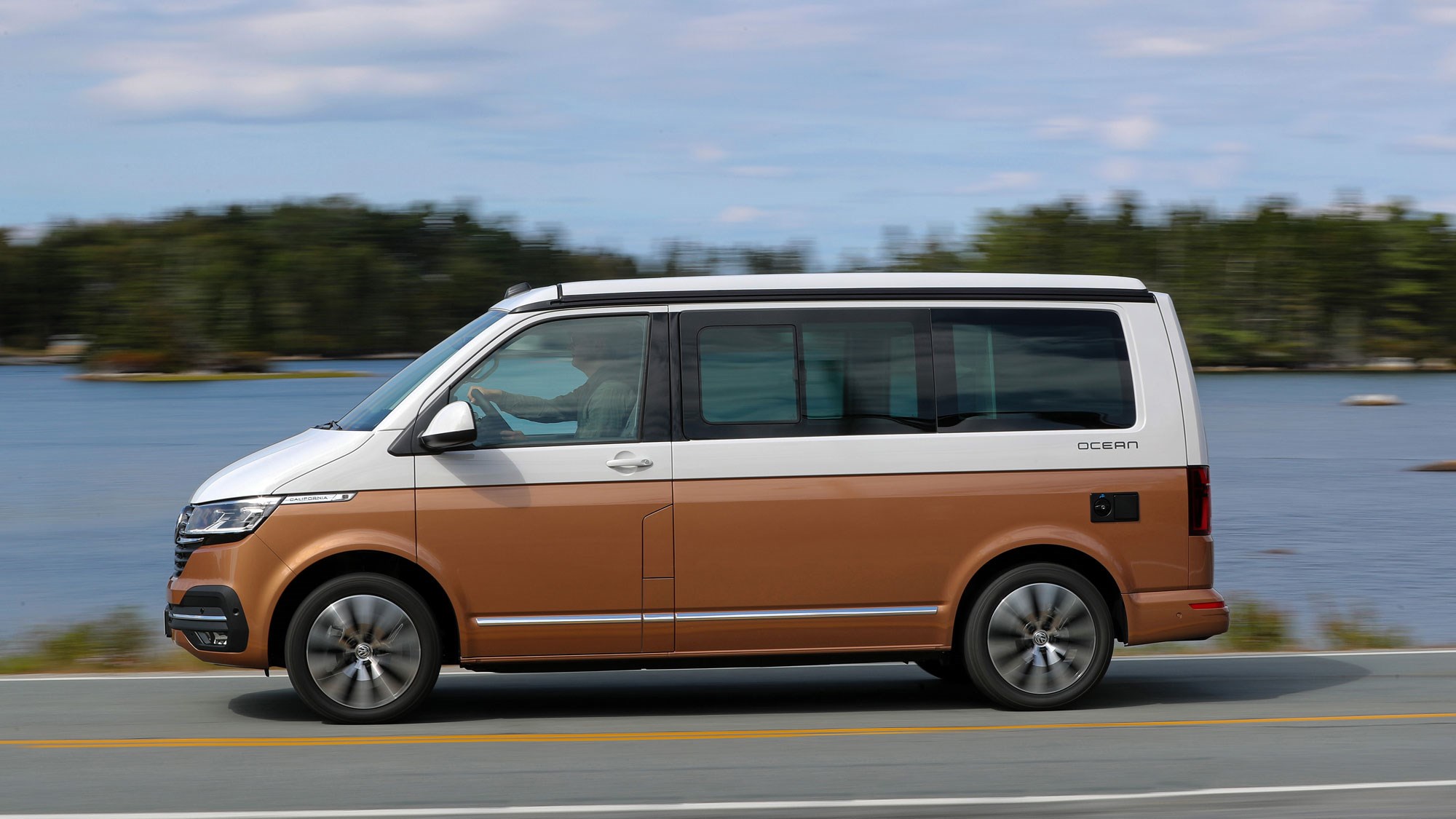► The new California driven
► A mobile house on wheels
► What about the Grand California?
Driving The Classics: Playmobil Model Car
Volkswagen has not reinvented the campervan here – but, then, it hardly needed to. The California is a legend in its own lunchtime, and that lunch is inevitably served on the road, from the in-built fridge, possibly even cooked on the in-built gas hob. As such, it was already an excellent way to spend the sort of money that buys less adventurous types a very tasty Boxster.
Yet the new T6.1 version is better. Definitively so. Maybe to the extent that owners of the previous T6 model might actually want to trade up. The changes here bring quality improvements that make an already awesome box of tricks that bit more likely to have you impulse buying new walking boots before driving off into the wild.
To prove its point, we’ve been testing a range-topping four-wheel drive Ocean model around Nova Scotia, Canada. In October.
Fire up the auxiliary heater?
Funny you should mention that. Turns out east coast Canada isn’t quite as shockingly cold during the day as you might imagine. But at night, well, let’s just say it’s good news you get a secondary leisure battery big enough to run said heater (standard fit across the UK range now) all night without flinching.

Bottom of the van – where the rear bench seat converts into a bed for two – is warmer, should this become a critical issue. But we survived on the upper deck (inside the pop-up roof) with a decent sleeping bag without troubling the maximum oven setting.
One of the attractions of the new model is that the top bed – which also sleeps two – gets upgraded to individual coil springs, so it’s a comfier choice assuming you can do the gymnastics necessary to lever yourself up through the sun-roof sized hole to get there.
What’s more, the auxiliary heater and the electro-hydraulic roof-raising mechanism (standard on the Ocean) are two of the many things now controlled by a fancy new touchscreen ‘camping panel’ mounted above the rear-view mirror.
Ah, so the T6.1 California is more than just a pretty face?
Is it pretty? The facelift that separates this from the old T6 California is sharper, with an increased emphasis on horizontal lines and much bigger grille openings for improved engine cooling. But pretty…?
By campervan standards it’s a looker, we suppose, and with the optional two-tone paint it attracted the attention of plenty of locals – though some of this was surely the novelty of seeing a vehicle not sold in Canada cruising about in packs, especially with the German number plate still proudly attached to the front.
Getting back to your main point, while VW hasn’t shied away from attractive cosmetics in the process, the upgrades here all bring functional advances to enhance your so-called ‘van life’ (hashtag sigh).

Give me some examples of what’s new, then?
While the camping panel nomenclature is technically unofficial, this does collect together a bunch of stuff that you’re likely to need when setting up camp.
Some of this is just control relocation – it allows you to operate the cool box fridge and the interior lights before you’ve even left the driving seat, for example – but there are new features as well.
The Camping Mode setting can deactivate the exterior lights so you don’t disturb your fellow outdoors enthusiasts when stumbling back from the pub by illuminating the entire site when you hit the unlock button. More significantly, the panel can also display a set of digital levels to help you park the Cali in the most table-top manner possible – handy if you have any ambitions to get a genuinely good night’s sleep.
Also helpful in this regard is the darker grey finish to the material that forms the sides of the pop-up roof area, which aims to cut down on uninvited sunlight; invited sunlight is easily accessed by zip-open panels, including a fully opening section across the entire front. Should there be no actual sunlight available (as on day three of our trip, when the heavens decided to open), that new panel has a sunrise alarm setting that will gradually bring up the interior lights to wake you gently, like one of those posh alarm clocks.

The only frustrating thing about the camping panel is that you need the ignition on to activate some of its functions. So if you’ve forgotten to pop the roof before losing the keys in the jumble of clothing you haven’t bothered to put away in the cupboards in the back, do enjoy a couple of minutes of moderate swearing while you find them.
And how is the accommodation?
Largely as it was in terms of layout – though the downstairs bed-seat set-up now has a ‘cosy lounge’ configuration as well as the regular ‘bed’ and ‘seat’ trick it carried off before. There are some noticeable detail improvements, however, including new aluminium handles for the cupboards, push-button release mechanisms for the work surfaces that cover the cooker, cool box and sink, and some – dare we say it? – classier wood finishes for the panelling and floor. The upholstery has been changed slightly to match.
Doesn’t sound like much, but it all helps distance you from the reality that you’re inhabiting a vamped-up Transporter van.
The Transporter itself plays a role in this, as in T6.1 guise it now gets a much smarter and car-like dashboard design, and one that still manages to be more practical than it was thanks to extra storage solutions – including dash-top bins and cupholders.
Build and material quality feels up to the California’s predictably wince-inducing price (not quite finalised for the UK at the time of writing due to tax reasons – seriously), and all the clever details that have helped make the California so popular remain present and correct.

To recap, these include built-in blinds for most of the windows (the front side windows use magnetic cloth panels), swivelling front seats, outdoor seats tucked up in the tailgate, a table built into the sliding door, and a ceiling that can be raised once the roof is up so you can comfortably stand in the cabin when slaving over the two-burner kitchenette.
Is the California comfy to sleep in?
We stuck to the top bunk and its flash new springs – which replace the previous wooden slats. The individual spring layout is supposed to stop you disturbing your partner whenever you turn over, but flying solo made it impossible to check this.
It is certainly supportive enough for a decent kip, though the mattress doesn’t have much depth to it for obvious reasons. You just need to mentally convince yourself you’re not going to accidentally fall through the access hole (there’s a net, don’t panic). And bring a good pillow – something we foolishly forgot.
Safe to say, it beats sleeping in a tent. And when the heavens do open – which they did with some gusto while we were nodding off alongside the gloriously named Mush-a-Mush lake – rest assured the only way the California will let water in is if you leave one of the zipped panels open…
Drives like a van, does it?
Meow. If you’re making that comment you probably haven’t driven a proper van for a while – the Transporter and its ilk turn in a reasonable performance these days, and the California helps its case with a choice of 148bhp or 196bhp 2.0-litre TDI engines, a standard-fit seven-speed DSG transmission and the option of front- or four-wheel drive.
When something not only looks like a house but can in fact largely function as one, tackling corners in a similar manner is bound to be virtually unavoidable, and this isn’t the most nimble thing we’ve ever wrangled down a two-lane highway. On the other hand, it’s no inexorably understeering horror show, either. And beside, once you’ve got some crockery stashed inside you probably aren’t likely to be throwing it around like a WRC car.
Again, there is no radical change here versus the previous model, although Volkswagen has switched the T6.1 over to electro-mechanical power steering and refined the suspension a tad. Having driven it back-to-back with a T6 that was on hand, you’ll have to go out of your way to detect much of a difference – maybe the 6.1 has a little more movement in the wheel before the resistance bites – but then even a choice of driving modes and new Dynamic Chassis Control with more expansive settings doesn’t bring out any immediate differences in character.

It will rattle and bang over bumps – it’s a big, relatively unstructured box, after all. But engine refinement is good, the seats don’t numb your bum on long journeys, and with 199hp and 4Motion it has no trouble getting out of the way of other traffic. Despite DSG no longer being as cutting edge as it once was.
The main thing is the California will get you to the next camp site safely and soundly. Especially since the EPAS means more driver assistance is available, including crosswind assist, active lane-keeping and automatic parking.
All T6.1s are available with VW’s latest MIB3 infotainment systems, which comes with wireless Apple CarPlay and Android Auto, voice control and on-board Wi-Fi; the California Ocean gets this, sat-nav and digital dials as standard.
Sounds… expensive
Make no mistake: it is. Full UK on-the-road pricing isn’t available yet, but the top whack Ocean tested here will be upwards of £67k. In addition to FWD Oceans and lower power outputs, the UK is taking a lesser Coast model this time – which still has the kitchenette, unlike the previous entry-level Beach model. This starts at over £53k.
There is a new Beach – now available with single-burner surprise hob, hidden in the side panel opposite the sliding door (genius) – but as yet no plans to bring it to these shores. A shame perhaps, but there’s not much of a business case when the vast majority of British buyers have previously ignored it.
Regardless, while California costs have increased, the new model also gets a load of additional kit, including the awning that everyone optioned anyway.
So it’s worth it?
It’s never going to make sense to some people, but as a piece of product design that is utterly fit for purpose, the California remains truly outstanding.
The only thing that stops it becoming an automatic lottery win essential for us is that its new big brother, the Grand California, comes with an on-board bathroom. The smaller California’s outdoor shower attachment doesn’t have quite the same level of appeal in that respect.
Still, it really is a wonderful machine.